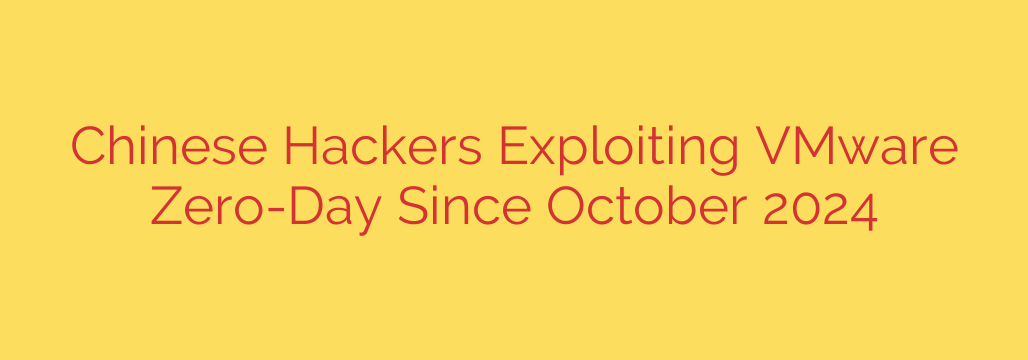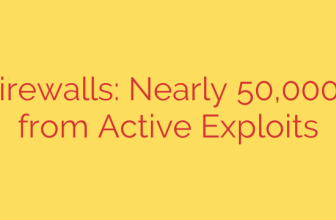
UNC3886 Hackers Exploit Critical VMware Flaw: How to Secure Your vCenter Server
A sophisticated, state-sponsored hacking group has been actively exploiting a critical zero-day vulnerability in VMware products for months, giving them deep and persistent access to compromised networks. The threat actor, identified as UNC3886, has been leveraging this flaw to bypass security measures and deploy custom malware on sensitive systems.
The vulnerability, tracked as CVE-2023-34048, is an out-of-bounds write flaw in VMware’s vCenter Server. This critical issue allows an attacker with network access to the vCenter appliance to execute arbitrary code, effectively taking control of the central management hub for virtualized environments. What makes this attack particularly dangerous is that it requires no user interaction and can be launched by a low-privileged attacker.
Security researchers have discovered that this exploit has been in the wild far longer than previously known, with evidence suggesting UNC3886 began its campaign as early as late 2023.
Who is UNC3886?
UNC3886 is a highly skilled cyber-espionage group with suspected links to China. This threat actor specializes in targeting virtualization platforms like VMware ESXi and vCenter. By compromising the hypervisor layer, the group can operate with near-total invisibility, bypassing security tools installed on guest virtual machines (VMs).
Their primary motivation appears to be intelligence gathering. UNC3886 targets organizations in the defense, technology, and telecommunications sectors, particularly in the United States and the Asia-Pacific region. Their advanced techniques allow them to maintain long-term persistence within a network, often for months or even years, while quietly exfiltrating data.
The Attack Chain: From Exploit to Total Control
The attackers’ methodology is methodical and highly effective, focusing on gaining complete control over the virtual infrastructure.
- Initial Compromise: The attack begins with the exploitation of CVE-2023-34048 to gain an initial foothold on the vCenter Server.
- Credential Harvesting: Once inside the vCenter, the attackers harvest credentials, including service account details, which they use for lateral movement.
- Pivoting to ESXi Hosts: Using the stolen credentials, UNC3886 moves from the vCenter Server to the underlying ESXi hosts—the servers that actually run the virtual machines.
- Malware Deployment: On the ESXi hosts, the group deploys custom backdoors. Security analysts have identified two unique malware families associated with this campaign: VIRTUALPITA and VIRTUALPIE. These backdoors are designed specifically for VMware environments, allowing the attackers to execute commands, transfer files, and maintain stealthy access.
- Full Environment Control: With backdoors installed on the ESXi hosts, the attackers have achieved their goal. They can now control, modify, or steal data from any guest VM running on those hosts, all while remaining hidden from traditional endpoint security products.
Actionable Security Measures You Must Take Now
Given the severity of this threat and its active exploitation, immediate action is required to protect your environment. Organizations using VMware products should assume they are a target and take the following steps.
- Patch Immediately: The single most important step is to apply the security patches released by VMware to address CVE-2023-34048. VMware has released vCenter Server versions 8.0U2, 8.0U1d, and 7.0U3o to fix this vulnerability. Prioritize patching internet-facing vCenter Servers first.
- Hunt for Indicators of Compromise (IOCs): Do not assume your systems are clean after patching. Actively search for signs of a breach. Check for the presence of the VIRTUALPITA and VIRTUALPIE malware on your ESXi hosts. Monitor vCenter and ESXi logs for unusual login activity, unexpected reboots, or unexplained commands, especially those originating from the vCenter appliance itself.
- Implement Network Segmentation: Restrict network access to your vCenter Server and ESXi management interfaces. These critical systems should not be exposed to the public internet and should only be accessible from a secure, isolated management network. This practice can prevent an attacker from reaching the vulnerable service in the first place.
- Enforce Strict Credential Hygiene: Regularly rotate service account passwords and implement multi-factor authentication (MFA) for all administrative access to vSphere. Adhere to the principle of least privilege, ensuring accounts only have the permissions necessary to perform their functions.
The exploitation of this VMware zero-day is a stark reminder that the foundational layer of modern IT infrastructure is a high-value target for sophisticated threat actors. Proactive patching, vigilant threat hunting, and a defense-in-depth security posture are essential to defending against such persistent and advanced attacks.
Source: https://www.bleepingcomputer.com/news/security/chinese-hackers-exploiting-vmware-zero-day-since-october-2024/








